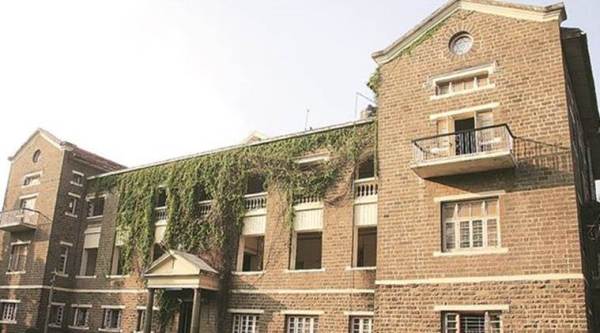 The Agharkar Research Institute was founded by botanist Dr S P Agharkar. File
The Agharkar Research Institute was founded by botanist Dr S P Agharkar. File
India would not have been a nuclear power, nor known of Homi Bhabha, father of the country’s nuclear programme, had it not been for Professor S P Agharkar, in the early 20th century.
A botanist at heart, Agharkar was the founder-director of the Maharashtra Association for the Cultivation of Science (MACS), now known as the Agharkar Research Institute (ASI), which celebrates its 73rd foundation day on October 5.
Agharkar’s contributions in biological sciences started in the pre-Independence era, when Pune, then known as Poona, was chosen as the location of MACS. Many educationists like Dr M R Jayakar and Dr D R Gadgil donated their personal savings to establish MACS with the aim of improving teaching in science and promoting research.
While MACS was established in the basement of the Indian Law Society’s Law College (ILS), it was relocated to its current location after the Maharashtra government offered five acres of land in the early 1970s. In 1992, the MACS was renamed Agharkar Research Institute (ARI) as a tribute to its founder.
In 1851, an event took place in London that would be the first of several world fairs and exhibitions of culture and industry that became popular in the 19th century. Known as The Great Exhibition, the event was organised to celebrate modern industrial technology and design, and showcased exhibits from all over Britain, the Americas, and Britain and all its colonies, including India.
Several Indian princes and businessmen donated their wealth to help set up a scholarship for Indian students named after The Great Exhibition, which was called the Royal Commission for the Exhibition of 1851 fellowship. But even several years after its constitution, no Indian student was ever awarded this scholarship. When Agharkar learnt this, he took up the matter with authorities and resolved it successfully.
“Dr Homi Bhabha was among the first recipients of this scholarship,” said Kishore M Paknikar, director, ARI, who has documented Agharkar’s life. He added that Agharkar was a man ahead of his times, but despite his contributions to the biological sciences, the world did not know much about him. That is why the ARI team, led by Paknikar, decided to trace and document Agharkar’s life.
“It took me over a year to trace the several milestones of Aghakar’s life and retrieve his personal belongings, most of which he had donated to the institute,” said Paknikar, who collated Agharkar’s life in the form of a biographical sketch and released a booklet. The booklet was released three years ago by Dr Anil Kakodkar, former Chairman of the Atomic Energy Commission, along with the inauguration of an Agharkar memorabilia, housing several of his personal belongings kept on display at the institute.
These include several antiquities — a gold-plated microscope, Agharkar’s wedding card dated March 30, 1910, a functional manual typewriter, a telescope, several books, clothes and walking sticks, utensils, a dressing table — and his PhD thesis, which Agharkar received from Berlin University a hundred years ago.
In fact, Agharkar was conducting his PhD in Berlin when World War-I broke out and he also faced imprisonment by German authorities. But nothing deterred him from accomplishing his research work.
Today, ARI has over 60 ongoing projects and several international collaborations. The main themes of research here span six areas — biodiversity and paleobiology, bioenergy, bioprospecting, development biology, genetics and plant breeding and nanobioscience.
ARI was among the first science and technology research institutes to get permanent recognition from the University of Pune, which was established two years after ARI.